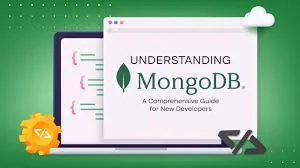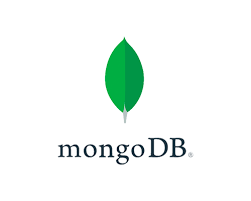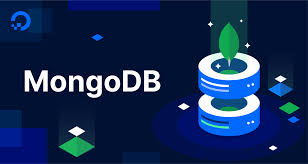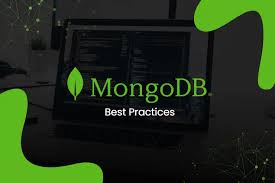A Comprehensive Guide to MongoDB: Features, Data Modeling, and Best Practices 2024
MongoDB is a NoSQL database that provides scalability, flexibility, and high performance for modern applications. Unlike traditional SQL databases, MongoDB stores data in a document-based format (JSON/BSON), making it ideal for big data, cloud applications, and real-time analytics.
In this blog, we will explore: ✅ Key features of MongoDB
✅ MongoDB data modeling
✅ Indexing and performance optimization
✅ Best practices for MongoDB usage
1. Introduction to MongoDB

MongoDB is an open-source NoSQL database designed to store unstructured and semi-structured data. It is commonly used for applications that require:
- High availability and horizontal scalability.
- Flexible schemas that can evolve over time.
- Real-time analytics and big data processing.
✅ Why MongoDB?
- Stores data as JSON-like documents (BSON format).
- Schema-less design, allowing flexibility in structure.
- Sharding enables horizontal scaling.
- Supports replication for high availability.
🔹 Example Use Cases:
- E-commerce applications (storing product catalogs).
- Social media platforms (user profiles, posts, and comments).
- IoT and sensor data storage.
2. MongoDB Data Model

Unlike SQL databases that store data in tables with rows and columns, MongoDB uses a document-based model.
A. Document Structure (BSON Format)
MongoDB stores records as documents in BSON (Binary JSON) format.
🔹 Example: Storing a Book Document
jsonCopyEdit{
"_id": ObjectId("507f1f77bcf86cd799439011"),
"title": "The Pragmatic Programmer",
"author": "Andrew Hunt",
"publisher": {
"name": "Addison-Wesley",
"year": 1999
},
"genres": ["Programming", "Software Development"],
"price": 39.99
}
✅ Advantages of Document Model:
- Flexible schema: Documents can have different fields in the same collection.
- Embedded documents: Reduces the need for JOINs, improving read performance.
- Dynamic fields: Add or remove fields without altering schema.
B. Relational Model vs. MongoDB
| Feature | SQL Database (Relational) | MongoDB (NoSQL) |
|---|---|---|
| Schema | Fixed, predefined | Schema-less, flexible |
| Scalability | Vertical Scaling | Horizontal Scaling (Sharding) |
| Joins | Uses SQL Joins | Uses embedded documents |
| Performance | Slower with complex joins | Faster reads due to denormalization |
🔹 Example: In a SQL database, User and Address are stored in separate tables and joined using user_id.
In MongoDB, the address can be embedded inside the User document.
3. CRUD Operations in MongoDB
MongoDB allows standard Create, Read, Update, and Delete (CRUD) operations.
A. Insert a Document
jsonCopyEditdb.books.insertOne({
"title": "MongoDB: The Definitive Guide",
"author": "Kristina Chodorow",
"published_year": 2010
})
B. Find Documents
jsonCopyEditdb.books.find({ "author": "Kristina Chodorow" })
C. Update a Document
jsonCopyEditdb.books.updateOne(
{ "title": "MongoDB: The Definitive Guide" },
{ $set: { "price": 45.99 } }
)
D. Delete a Document
jsonCopyEditdb.books.deleteOne({ "title": "MongoDB: The Definitive Guide" })
✅ MongoDB uses a flexible query language similar to SQL, but with JSON-like syntax.
4. Indexing and Performance Optimization
Indexes in MongoDB improve query performance by reducing the amount of scanned documents.
A. Creating an Index
jsonCopyEditdb.books.createIndex({ "title": 1 })
1for ascending order.-1for descending order.
B. Compound Indexes
jsonCopyEditdb.books.createIndex({ "author": 1, "published_year": -1 })
✅ Improves search speed when filtering by multiple fields.
C. Covered Queries
A covered query retrieves all required fields from an index, avoiding full document scans.
jsonCopyEditdb.books.find({ "title": "MongoDB: The Definitive Guide" }).explain("executionStats")
🔹 Best Practice: Always analyze query performance using .explain().
5. Replication and Sharding in MongoDB

A. Replication (High Availability)
- MongoDB supports Replica Sets for fault tolerance.
- Primary node handles writes, while secondary nodes replicate data.
- If primary fails, a secondary is promoted.
B. Sharding (Scalability)
- Distributes data across multiple servers.
- Uses shard keys to determine data placement.
- Improves write performance for large datasets.
🔹 Example: A global e-commerce platform uses sharding to distribute orders by geographical region.
6. Best Practices for Using MongoDB

✅ Use proper indexes to speed up queries.
✅ Embed related data when queries need both sets frequently.
✅ Use replica sets for high availability and failover.
✅ Sharding is useful when the dataset grows beyond a single machine’s capacity.
✅ Monitor performance using tools like MongoDB Atlas.
7. MongoDB vs. Other NoSQL Databases
| Feature | MongoDB | Cassandra | Redis |
|---|---|---|---|
| Data Model | Document | Wide-Column | Key-Value |
| Use Case | General-purpose | Big Data | Caching |
| Schema | Flexible | Fixed | Key-value pairs |
| Query Language | JSON-like queries | CQL (SQL-like) | Commands |
🔹 Choosing the Right Database:
- Use MongoDB for flexible document storage.
- Use Cassandra for distributed big data workloads.
- Use Redis for fast caching and key-value storage.
8. Final Thoughts
MongoDB is a powerful NoSQL database that offers flexibility, scalability, and high performance. Whether you’re building a real-time application, AI/ML system, or an e-commerce site, MongoDB provides the right tools for data storage and management.
💡 Which MongoDB feature do you find the most useful? Let us know in the comments! 🚀